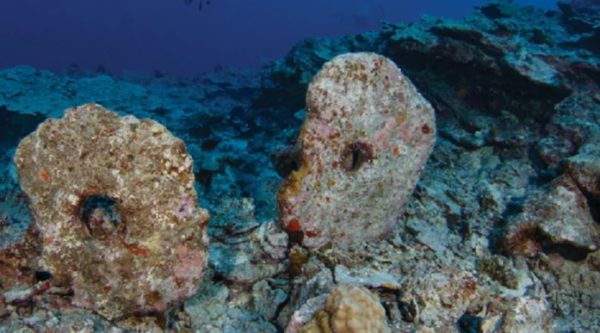
In ancient times, long before digital transactions, civilizations relied on various unique and unexpected forms of currency to facilitate trade and exchange.
In today’s modern society, where fiat money rules supreme, it can be easy to forget the imaginative and resourceful ways our predecessors valued goods and services.
These historical currencies tell tales of civilizations stretching across continents and centuries, each with its own distinctive flair and cultural significance.
While the trading system of old times may seem unconventional and strange to us now, it offers a valuable glimpse into the daily lives, customs, and values of early people.
Here are five of those strange currencies:
1. Rai Stones
Imagine trading in a currency that is nearly as large as you. These were the massive stones used as a form of currency on the island of Yap in Micronesia.
On the enchanting island of Yap, nestled within Micronesia, a unique and astonishing form of currency was utilized—the Rai Stones. These stones, weighing 168.5 pounds, were employed as a medium of exchange in the local economy.
Unlike conventional coins, Rai Stones were not meant to be carried about but were instead reserved for momentous occasions and ceremonial payments, such as dowries. Referred to as Yapese stone money, they hold a significant place in the history and culture of the island.
The origins of Rai Stones remain a mystery, with no precise records to determine their inception. What is known, however, is that each one is different, and they are as heavy with meaning as they are in the volume of limestone, carved and voyaged by the Yapese all the way from Palau, an island nation. The very first pieces were used as gifts and shaped like a whale, thus named ‘rai’ stones. But they’ve evolved to become currency, including holes carved through the centre to make them more transportable across the oceans.
Today, rai stones are still used in rare important social transactions, such as marriage, inheritance, political deals, signs of an alliance, ransom of the battle dead and sometimes in exchange for food.
2. Salt
Salt was a valuable commodity, also referred to as “white gold”.
The salt was referred to as “white gold” by the people of olden times and was highly valued for food preservation. Since its production was very limited, in many places of the world, salt was used as currency.
As early as the 6th century, Moorish merchants in sub-Saharan Africa routinely traded salt and gold at the same value per ounce.
During the Roman era and throughout the Middle Ages, salt continued to be a coveted commodity. The term “white gold” became synonymous with salt, signifying its preciousness and economic significance. It was held at such high value that soldiers in the Roman army occasionally received salt as part of their payment instead of traditional currency.
Fun fact: The monthly allowance given to Roman soldiers was called “salarium,” with “sal” being the root word for salt. This Latin root found its way into the French language as “salaire” and eventually became the English word “salary.” Hence, the salary we anticipate at the end of each month finds its etymological roots in the word “salt.”
3. Wampum
Wampum is an Algonquian word that roughly translates to white shell beads.
Wampum beads were crafted from the shells of clams, specifically the white and purple parts of the shell.
The process involved cutting, rounding, sanding, and drilling the shell pieces to transform them into beads. These unique shell beads are then used as a form of currency and played a vital role in the cultures of the Onondaga and Haudenosaunee tribes in Native America.
The history of Wampum beads dates back to a time before 1510, with archaeological discoveries providing evidence of their existence. Prior to the arrival of European settlers, strings of Wampum beads served a multitude of purposes in Native American societies.
They were used as a means of storytelling, ceremonial gifts, and even as a medium for recording important treaties and significant historical events.
4. Tea Bricks
Tea Bricks were used as currency in the 9th century.
Prior to the Ming Dynasty, tea bricks were the most commonly produced and utilized form of tea in China.
The value of tea was remarkably high in numerous parts of Asia, leading to the adoption of tea bricks as a widely accepted currency. These brick-shaped tea blocks became a means of payment across various regions, including China, Tibet, Mongolia, and Central Asia. Remarkably, among nomadic communities in Mongolia and Siberia, tea bricks were preferred over metallic coins as a form of currency.
The tea could not only be used as money and eaten as food in times of hunger but also brewed as allegedly beneficial medicine for treating coughs and colds.
5. Animal hides
In an era when hunting was the primary means of sustenance, these hides became a valuable medium of exchange and a way to store wealth for future needs. The concept of using hides as currency is believed to have originated in China, where square pieces of deerskin leather were among the earliest forms of banknotes, exchangeable for goods.
This is believed to have marked the beginning of paper money.

